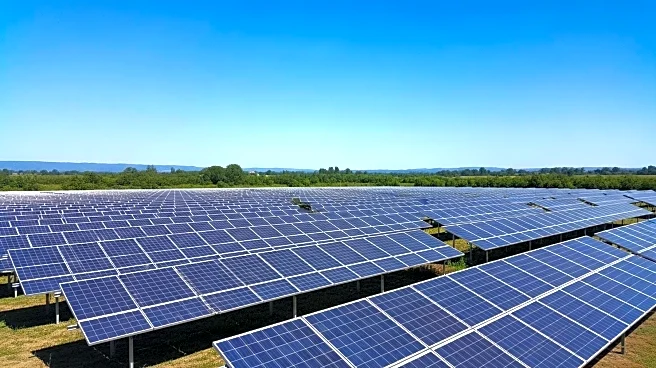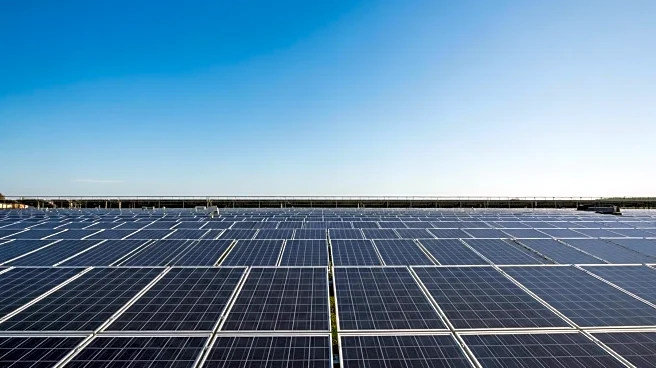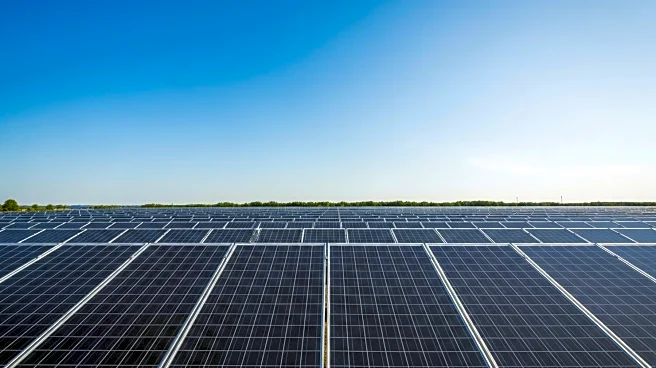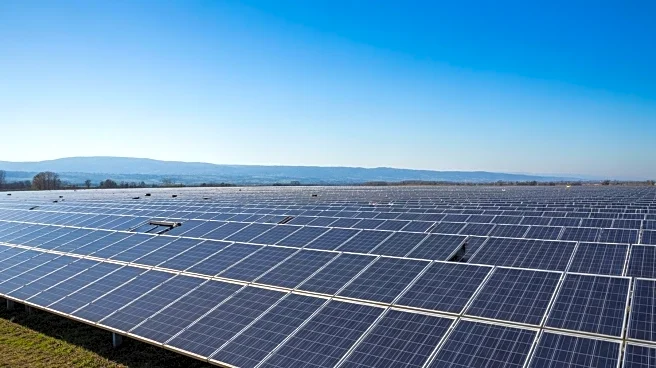What is the story about?
What's Happening?
Toyota Motor North America has launched a 30-acre solar field at its Kentucky manufacturing plant, marking a significant step in its sustainability efforts. The Georgetown facility, which is Toyota's largest vehicle manufacturing plant in North America, will use the solar power generated to offset part of its energy needs. This installation is expected to produce approximately 8.79 megawatts of clean energy, equivalent to the electricity used by about 1,400 homes annually. The solar field is part of Toyota's broader strategy to achieve net-zero emissions by 2030, reflecting the automotive industry's increasing focus on decarbonization amid regulatory and investor pressures. The initiative also includes a 30-megawatt solar project near its Alabama engine plant, aiming to cover 70% of that facility's power needs.
Why It's Important?
Toyota's solar field initiative is crucial as it represents a tactical shift towards integrating renewable energy within auto manufacturing, a sector traditionally reliant on fossil fuels. This move not only reduces operational costs but also positions Toyota as a leader in sustainable practices, potentially influencing competitors and suppliers. The project aligns with federal incentives pushing for 100% clean electricity by 2035, highlighting Toyota's commitment to environmental goals. By investing in on-site renewables, Toyota addresses energy cost volatility and supply chain challenges, setting a precedent for other industrial giants to follow suit in their sustainability journeys.
What's Next?
Toyota's efforts to achieve net-zero emissions by 2030 will require scaling up renewable energy projects, navigating regulatory hurdles, and overcoming supply chain bottlenecks. The company plans to continue leveraging power purchase agreements to claim renewable energy credits, supporting its carbon neutrality goals. As Toyota expands its solar initiatives, it may face resistance in coal-dependent regions, but successful partnerships with local utilities could streamline future projects. The ripple effect of Toyota's solar push could drive industry-wide transformations, encouraging more automakers to adopt similar strategies.
Beyond the Headlines
Toyota's solar field in Kentucky not only contributes to its sustainability goals but also exemplifies innovative use of industrial sites for green energy. By transforming former industrial wastelands into productive assets, Toyota demonstrates how brownfield sites can be repurposed for renewable energy projects. This approach could serve as a model for other companies seeking to balance environmental and economic objectives, fostering long-term shifts in industrial practices.
AI Generated Content
Do you find this article useful?















